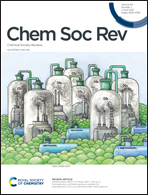Gadolinium theranostics for the diagnosis and treatment of cancer
Abstract
According to the World Health Organization (WHO), there were 18.1 million new cancer cases and 9.6 million cancer deaths reported worldwide in 2018. These numbers are expected to rise over the next decade, and the development of new and effective cancer treatments and diagnostic tools is urgently required, particularly for aggressive and intractable malignant cancers such as those of the brain. An exciting field of cancer research involves combining therapeutic and diagnostic tools into a single ‘theranostic’ platform. The role of theranostics in the personalized management of oncology patients is increasing, as is the demand for new types of theranostic agents. Some of the most promising cancer theranostics exploit the lanthanoid metal gadolinium, an element possessing favourable therapeutic and imaging properties.



 Please wait while we load your content...
Please wait while we load your content...